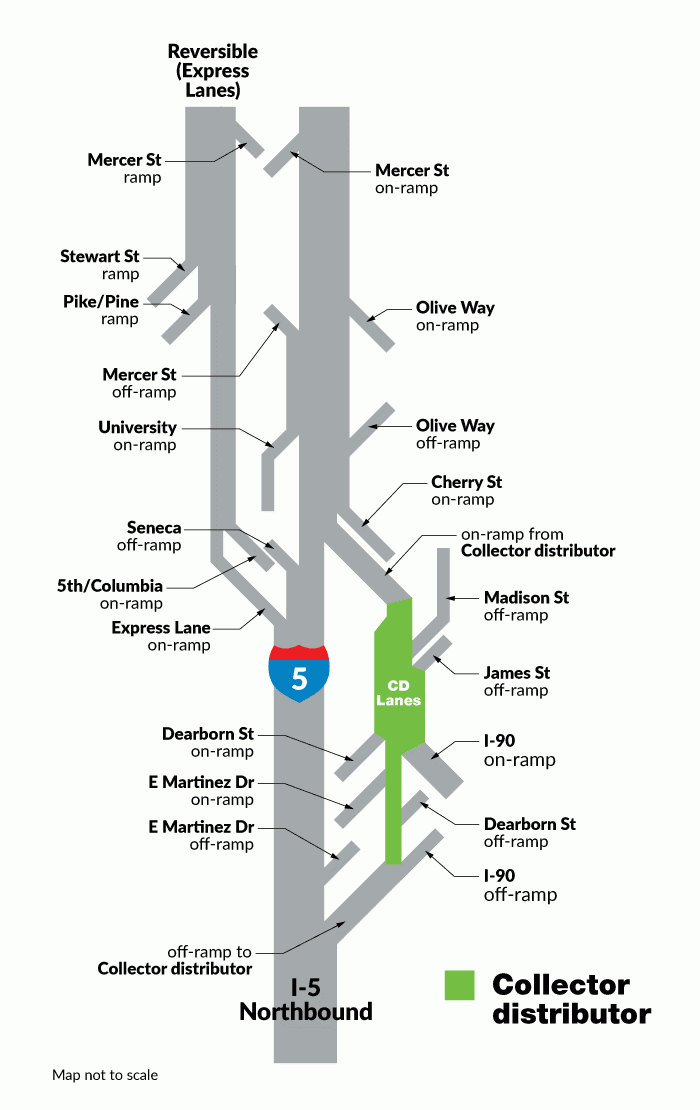Collector/distributor ramps
Learn about collector/distributors and how they improve traffic flow on freeways.
What is a collector/distributor ramp?
A collector/distributor separates freeway through traffic from other vehicles that are exiting or entering the freeway. Collector/distributors – also called C/D ramps or a C/D – are typically located in urban areas that see heavy traffic. When people enter a C/D from the mainline freeway or a side road, the ramps “collect” vehicles from on-ramps and “distributes” others to off-ramps before rejoining the mainline. Highways around the state have C/Ds, usually located at interchanges of major freeways like I-5 and I-90 in Seattle or northbound I-5 and SR 16 in Tacoma. They also are used in places with numerous on- and off-ramps in close proximity, like southbound I-5 in Centralia between Harrison and Mellen streets.
Collisions are most common where traffic merges. By reducing merge points on a freeway's main lanes, collector-distributor ramps benefit all drivers by:
- Eliminating weaving to exit or enter a freeway’s main lanes.
- Reducing the number of exit and entrance points on a freeway's main lanes while meeting the demand for access to and from the freeway.
Using a collector/distributor ramp
When using a collector/distributor, be prepared for reduced speed and merging traffic at numerous locations. As soon as it is safe, use your turn signal and move into the lane you need to be in to exit or enter the freeway. When exiting, watch carefully for your ramp; sometimes they are quite close. C/Ds may have ramp meter signals that will require a stop.

keeping numerous merge points off the main lanes of the freeway.
Slow down on ice and snow.
It's easier to skid or lose control traveling at higher speeds. Give yourself more time to stop.
Carry chains, practice installing them.
Winter conditions could mean chains are required on your route. Practice putting them on your vehicle ahead of time.
Pack your winter car kit.
Carry extra supplies like warm clothing, ice scraper and brush, jumper cables and other emergency items.
